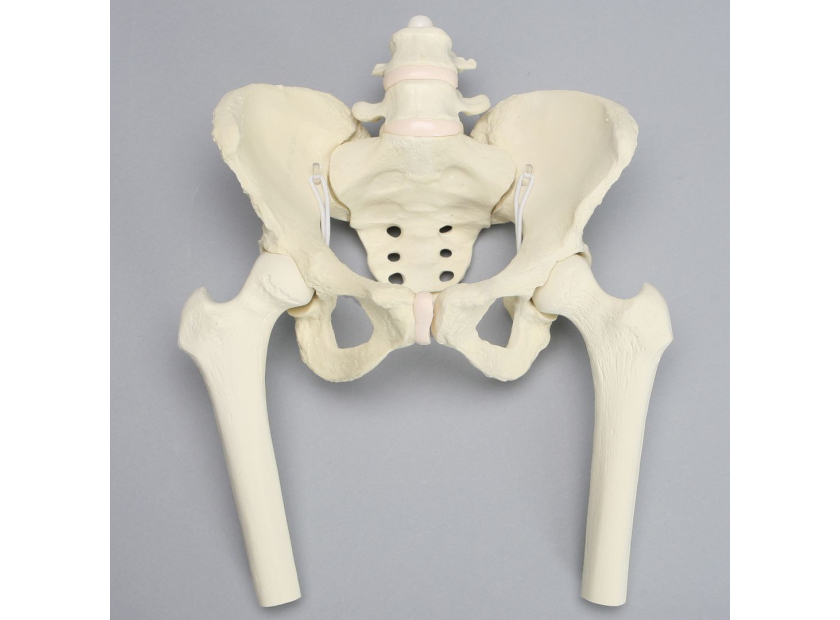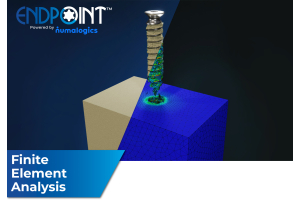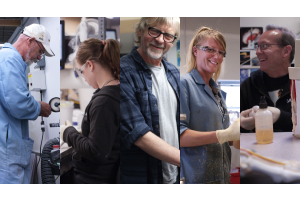Questions About Femoroacetabular Impingement That a Hip Model Answers
Femoroacetabular impingement treatments can be a leap into the unknown. The cause of hip impingement is quite often concealed, and reaching a diagnosis can involve several different procedures. Untreated conditions can lead to an unpredictable rate of tissue breakdown, prompting the onset of arthritis.
For inexperienced practitioners, the condition can be one of the more difficult to adequately resolve with treatment regimes ranging in risk from anti-inflammatory medications to surgical interventions—and even then, the impingement may require multiple procedures.
Access to an advanced hip models can help provide some answers to the challenges femoroacetabular impingement poses to practitioners. Models that include haptic feedback, authentic composite bone materials, and radiopaque conditions can help train specialists who are skilled enough to find solutions for conditions that often have mysterious presentations.
The Questions Hip Models Help Solve
The key areas engineered models can help address in femoroacetabular impingement treatments are as much about diagnosis and decision as they are about surgical intervention.
Some common questions include:
- How do you accurately diagnose femoroacetabular impingement?
- How do joints feel and perform under the condition?
- What are the surgical best practices for treating femoral head or acetabulum deformities?
- How do you perform surgical procedures with both femoral head and acetabulum abnormalities?
- What are the best practices for physiotherapy treatments?
The wide range of questions models can help address is indicative of the broader flexibility and practicality of the emerging generation of engineered solutions. There is a model for just about every procedure in just about every specialty.
The Range of Modern Medical Models
Recent research has found that simulation models may be the best way to address the ever-increasing number of procedures that specialists such as orthopaedic surgeons must master. Dynamic models can allow trainees to learn a number of interventions on a single piece of equipment, reducing costs and increasing exposure. The resulting boost in confidence and decreased learning curve of pre-clinical students may improve the transfer of skills to an operating room setting.
Modern models can be custom made to aid in the instruction of any procedure across all the major fields, including:
- Emergency
- Chiropractic
- Neurosurgery
- Orthopaedics
- Pain management
- Pediatrics
- Physiatry
- Rheumatology
- Veterinary
Just as in the case of femoroacetabular impingement education, these models can be used to begin addressing the key questions that will dominate a specialist's entire career.
As with any condition, femoroacetabular impingement treatment begins with the uncertainty of diagnosis.
1. How Do You Accurately Diagnose Femoroacetabular Impingement?
The symptoms of femoroacetabular impingement can be mysteriously vague. In many presentations, it will be necessary to undertake a physical examination, x-ray, and MRI before an accurate diagnosis can be reached.
The best medical models are able to replicate the sensitivity of these procedures by giving students access to authentic composite bone materials and engaging them in multiple arthroscopic settings.
Cheaper than operating-room observation and more readily available than cadaveric samples, this new generation of models is an affordable, practical means of standardizing education across cohorts.
2. How Do Joints Feel and Perform Under the Condition?
The composite materials that the current generation of medical models use to simulate surgical performance are the best that have ever been available to instructors. Within the areas of hip procedures alone there are models for
- Arthroscopy trainers that include all the major muscle and cartilage
- Hemi pelvis models robust enough to withstand screws
- Hip conductive injection trainers
With variety comes increased finesse and specialization, and custom models can be produced that fit the exact needs of teachers who want to replicate the feel, pressure, and force of surgical interventions.
3. What Is Surgical Best Practice for Treating Femoral Head or Acetabulum Deformities?
The majority of femoroacetabular impingement surgeries will involve precision interventions to repair damaged portions of the hip joint, and to correct the deformed shape of either the femoral head or acetabulum. The fact that there are two potential sites of abnormality complicates diagnosis and surgery alike, and students need to be well-versed in both eventualities to achieve successful outcomes.
Modern models are dynamic enough to cope with both potentials with the same resource. The best models are created on buildability principles that makes expansion and alteration possible. Instructors can alter models in difficulty and presentation to ensure continued student development.
4. How Do You Perform Surgical Procedures With Both Femoral Head and Acetabulum Abnormalities?
Femoroacetabular impingement is, like many other presentations, a complicated condition that can involve multiple, related causes. In this strict case, there’s the possibility that both the head and cup of the joint are damaged or congenitally deformed. This obviously increases the complexity of surgical procedures and requires surgeons to react quickly to unexpected conditions.
Preparing for the unexpected is never easy, but modern medical models can help by providing haptic feedback that adds immediacy and consequences to practiced actions. Through sound or vibration, haptic feedback helps teach precise, economic moves that produce minimal side effects.
5. What is Best Practice for Physiotherapy Treatments?
Surgery is never the first option practitioners will pursue in treating femoroacetabular impingement, so students need to understand all potential therapies. Often patients will be given the option of undertaking physiotherapy, behavioural change, or a course of anti-inflammatory medications.
The hands-on pain management and physiotherapy aspects of non-surgical solutions are among the treatment options that modern medical teaching models can address, as listed above. As with the simulated surgical interventions, these practical tools give students the chance to repeat procedures, under increasingly difficult conditions, until they have developed the motor skills, confidence, and economy of movement necessary to make a positive impact within the community.
Custom Solutions for Femoroacetabular Impingement Education
Of course, the standards for the treatment of femoroacetabular impingement continue to evolve—as they do for every specialty. That means the models that provide answers now will need to be refined in the future.
That’s where medical training model customization comes to the fore. The leading engineering firms are currently able to produce custom displays, training models, clear bone models, biomedical test materials, benchtop models, and more that can be built to exact specifications that push medical education ahead.
If you have an idea about how the unknowns of femoroacetabular impingement diagnosis, treatment, and surgical intervention could be better revealed to those in the field, then you need to consult a medical model engineering firm and turn your experience into hands-on practical education.
The expert design team at Sawbones can create a medical training model to suit any specialty or procedure. We can even produce models on a commercial scale. Contact us at 206-463-5551 and start creating a better learning environment.

If you're seeking something you can't find on our website, our sales team is happy to help. We can either direct you to the right model or provide a free quote on the right custom project to meet your needs. Discover options with our clear bone models, laminated blocks, custom displays, or other machining projects.









